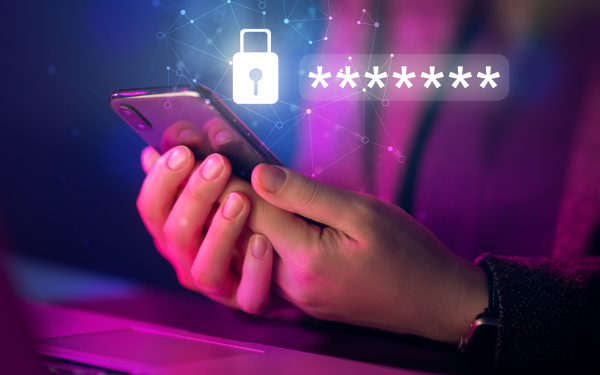Keeping your office secure isn’t just about locking doors anymore, whether you’re running a small business or managing a large team, today’s security threats come from all directions: physical dangers like break-ins and fires, plus an increasing number of online threats targeting your data. So, how do you protect both your workspace and your digital assets? It’s not as complicated as you might think, and you don’t need to be a tech wizard to get started.
We’re going to break down everything you need to know about securing your office, both in the physical world and online. Ready? Let us begin.
Securing the Physical Office Environment
When it comes to keeping your office safe, it’s all about creating layers of protection that cover everything from entry points to emergency preparedness.
Access Control Measures
First things first, let’s talk about controlling who comes into your office. Ever thought about who’s got access to your workspace? If you’re still relying on regular keys or, worse, leaving doors unlocked during work hours, it might be time to upgrade. A key card system or biometric access (think fingerprint scans or facial recognition) can work wonders for controlling entry and exit. It’s like giving your office a VIP list—only the right people get in.
Don’t forget about cameras either. A good surveillance system is your eyes when you’re not around, helping you monitor for any suspicious activity. The presence of cameras alone can be a strong deterrent against theft or other unwanted incidents. After all, no one wants to get caught on tape!
Workplace Layout for Safety
Next, consider the layout of your office space. Is it easy to navigate, with clear evacuation routes in case of an emergency? Proper lighting in all areas, especially hallways and entrances, is crucial not just for comfort but also for safety. You want your office to feel open and visible—dark, hidden corners are the kind of places where accidents (or worse) happen.
If something does go wrong, make sure your employees know how to react. Run regular fire drills, post visible emergency exits, and ensure first aid kits are accessible. It’s not the most glamorous part of security, but it could save lives.
Fire Safety and Emergency Preparedness
On that note, fire safety should always be a top priority. Do you have smoke detectors installed and working? Are your fire extinguishers up to date? Having a plan in place is essential, one that includes clear steps for employees to follow in the event of an emergency. Trust me, when things go sideways, a little preparation goes a long way.
Protecting Digital Assets and Online Safety
Now, let’s shift gears and talk about the digital side of security. In today’s world, your data is as valuable as anything else, and unfortunately, there are plenty of people out there who would love to get their hands on it. But don’t worry, protecting your online assets isn’t rocket science.
Strong Password Policies
Here’s a question for you: How strong is your password? If it’s “password123” or your dog’s name, it’s time for a change! Strong passwords are your first line of defense. Make sure your employees are using complex combinations of letters, numbers, and special characters. Better yet, introduce password management tools to help generate and store secure passwords. It takes the guesswork out of creating something safe. And remember, it’s not just about having a strong password—it’s about keeping it fresh. Encourage regular updates, so even if a password is compromised, it won’t stay that way for long.
Data Encryption and Secure Storage
Another important tip? Encrypt everything. When you encrypt your data, you’re essentially scrambling it so that even if someone manages to get their hands on it, they won’t be able to make sense of it. Think of it like putting your data in a locked box that only you have the key to.
Additionally, be mindful of where you’re storing sensitive information. Use secure cloud storage solutions and always back up your data in multiple locations. That way, if disaster strikes — whether it’s a system crash or something more sinister, you’re not left empty-handed.
Employee Training on Cybersecurity
What good is a locked door if someone opens it for a stranger? The same principle applies to cybersecurity. Your team needs to know how to spot a phishing email or a suspicious link. Regular training can make a huge difference. Teach your employees about common threats and what to do if they encounter them. Teach your employees about common threats and what to do if they encounter them. The more informed they are, the safer your business becomes. It’s also crucial to get protection for your employees by ensuring they’re covered with comprehensive plans like workers’ compensation insurance, which safeguards them in case of accidents while on the job. The more informed they are, the safer your business becomes.
Implementing a Comprehensive Cybersecurity Strategy
When it comes to online security, it’s all about layers. The more layers you have, the harder it is for cybercriminals to break through.
Multi-Factor Authentication (MFA)
One of the best security layers you can add is multi-factor authentication (MFA). You’ve probably encountered it before—entering a password and then receiving a text message with a code to access your account. It’s an extra step, sure, but it’s a crucial one. By requiring multiple forms of verification, you’re making it that much harder for someone to hack in.
Regular Software Updates and Patching
Are you guilty of ignoring those pesky “Update Available” notifications? We all do it. But here’s the thing: those updates are usually fixing security vulnerabilities that hackers are eager to exploit. Keeping your software up to date is one of the simplest (yet most effective) ways to protect your systems.
Data Access Control and Monitoring
Finally, be thoughtful about who has access to what. Not every employee needs access to every file, right? Restricting access based on roles ensures that sensitive information stays in the right hands. And don’t forget to monitor network activity regularly, you’ll want to catch any unusual behavior before it becomes a full-blown issue.
The Importance of Hybrid Security Measures
So far, we’ve talked about physical security and online safety separately. But here’s the truth: the two are more connected than you think.
Balancing Physical and Cybersecurity
These days, physical security systems like surveillance cameras often rely on digital infrastructure. That means your office’s physical safety is directly tied to how secure your online systems are. If someone hacks into your camera system, they might be able to disable it or even spy on you. The key is to make sure your physical security is as airtight as your cybersecurity—and vice versa.
Hybrid Work Environments
Speaking of connection, what about employees who work from home? If you’re running a hybrid work environment, you need to ensure that remote workers are just as secure as those in the office. Make sure your team is using secure Wi-Fi networks, virtual private networks (VPNs), and other safety measures when accessing company data from home.
Future-Proofing Your Office and Cybersecurity
What about the future? With technology evolving at breakneck speed, how do you stay ahead of the curve?
Adopting New Security Technologies
New threats require new solutions. AI-driven security tools are becoming more popular, helping businesses detect threats faster and more accurately than ever before. While AI isn’t perfect, it’s an exciting step forward in the fight against both physical and digital threats.
Regular Security Audits
No matter how secure you think your office is, there’s always room for improvement. That’s why regular security audits are so important. By reviewing your current security measures, you can spot vulnerabilities and fix them before they become problems.
Staying Updated on Emerging Threats
Lastly, it pays to stay informed. Cybercriminals are always finding new ways to exploit businesses, and being aware of the latest tactics can help you defend against them. Whether it’s reading up on new threats or working with a cybersecurity expert, staying ahead of the game will keep your office safe for the long haul.
Ending Note
Keeping your office safe, both physically and digitally, might seem like a tall order. But with the right approach, it’s absolutely doable. From installing access control systems to training your employees on cybersecurity best practices, you can build a security strategy that protects every corner of your business.
Remember, security isn’t a one-time thing, it’s an ongoing process. By regularly reviewing and updating your measures, you’ll stay prepared for whatever comes your way. So, what’s the next step for your office? How will you start improving your security today?












